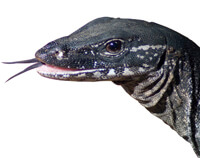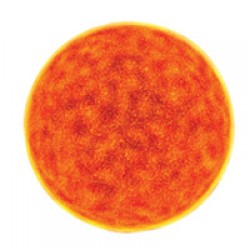Leavin’ Lizards?
The future could look bleak for cold-blooded creatures such as this Australian heath monitor, reports UW zoology professor Warren Porter. If global temperatures rise as much as many scientists predict, the monitor could be driven from its habitat. Porter has developed a tool he calls the Niche Mapper to determine how various animal species would be affected by changes to their environment. Earlier this year, he published a study with two Australian scientists that looked at how cold-blooded animals — particularly the heath monitor — would deal with a global rise in temperature of three degrees Celsius. Such an increase, they predict, would make much of the lizards’ current range uninhabitable. “We wanted to examine the common paradigm that says that cold-blooded animals spend most of their time seeking to keep warm,” Porter says. “What we found is just the opposite. Especially in the tropics, where most of the world’s biodiversity is, cold-blooded species are more concerned with keeping cool.” Rising temperatures could force the heath monitor to spend much of its day in the shade or underground, depriving it of the time it needs to forage for food.
Published in the Summer 2009 issue




Comments
No comments posted yet.